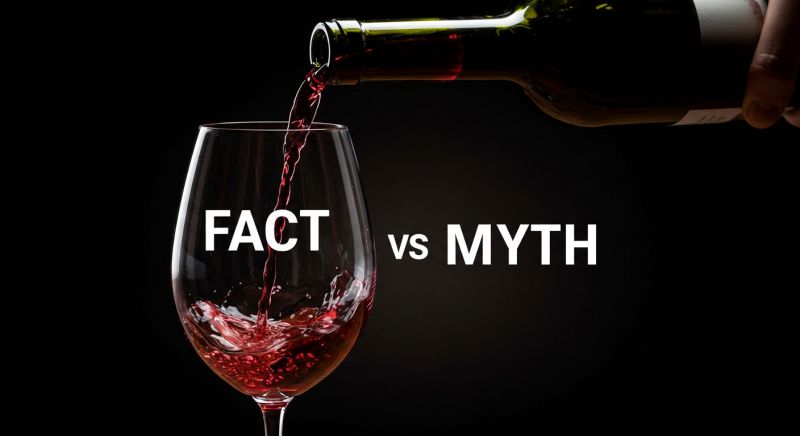
Wine Myths - Fact or Fiction?
What are common wine myths, and can you separate fact from fiction? You might unintentionally get caught up in this dynamic. Don’t let wine myths control your thinking; it’s time for you to take control!
The following are several myths outlined in a recent post by Janis Robinson, wine writer extraordinaire.
- All wine improves with age. Not necessarily, only 5% are made to age gracefully over many years. Oh sure, many reds and even a few whites will age gracefully for a period of time in the bottle. However, this 95th percentile is not purposely made to be consumed at a future date.
- Only cheap wine employs a screw cap. No, many top producers use screw caps because they are more reliable for keeping the wine, and are easy for the consumer to use.
- When you’re given the wine to taste in a restaurant, it’s to see whether you like it. Incorrect, you’re verifying the wine is what you ordered, and it doesn’t have a serious flaw.
- White wine should have a good chill on it. Wrong again, an excessive chill can muddle the nose and tasting experience.
- Conversely, red wine should be served warm. I bet you’re catching on, no, not always, there are exceptions.
- The heavier the bottle, the better the wine. Again, not necessarily, this is a producer’s decision.
- Red wine is more serious than white. Absolutely not! There are many nuanced and complex whites.
- A “corked” wine has cork pieces floating in it. Let’s get you to wine school. A corked wine means it smells moldy or of damp cardboard due to a bad cork.
Let me speak liberally, I like to chill lighter reds in the summer. It isn’t appetizing or enjoyable sipping a red wine when it’s 90+ outdoors, whether I’m outdoors or not. Every day, red wines that are perfectly acceptable to drink chilled include French Beaujolais, Gamay, Pinot Noir, and Grenache varietals.
I have several other favorite wine myths.
One of my favorite wine myths is that wine packaged in boxes is cheap and inferior to that in bottles. This may have been true when the wine brand Franzia initially introduced the public to boxed wines almost a generation ago, but not so anymore. There are many excellent wine producers making quality wine, providing their products not only in boxes, but in cartons and cans. You’ll now find many well-made wines in alternative packaging in a set-aside section at your local retail shop. Importantly, alternative packaging is the wave of the future, since glass production is carbon-intensive, and glass is heavy and expensive to ship.
Here is another myth falling into the fiction category. Rosé isn’t a serious wine. As you may know, Rosé is made from red grapes. When making Rosé, the winemaker only allows the grapes to swim in the crushed juice for a limited time, as to curb the color of the resulting wine. With Rosé, you achieve the best of both red and white wine worlds. A finessed and nuanced fruit in the nose typical of whites, and a body with greater heft than a white via its taste and color, though it can be made in a light and refreshing style as well.
Let me elaborate on the myth that red wine pairs best with red meat and hearty dishes, while white meat, such as fish, pork, and chicken, pairs best with white wine. For high-level direction, this approach can be practical, but it overlooks the more important attributes that should be paired, such as the dish and wine flavors. For example, if you’re eating a spicy chicken dish, drinking a light, crisp red wine helps to cleanse the palate during the meal. Another well-known example is drinking a red Zinfandel with a Thanksgiving meal, which serves to balance the richness of the sides and pairs well with the dry turkey you’re enjoying.
And don’t forget, user preferences, no matter the meal, take precedence!
Do you have wine myths you need debunked?

